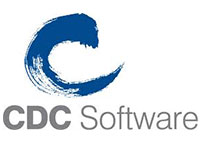
As the population ages, financial institutions and other service providers will have to learn to adapt their marketing approaches to appeal to a sector that has high disposable income and substantial spending power. In some cases, they will also have physical limitations that will impede online activities, including vision loss.
Besides the fact that an aging population brings with it a growing number of people with vision loss, the business and legal case for making Web content accessible to the visually impaired is becoming increasingly strong.
There are 3.3 million Americans over the age of 40 who are blind or have low-vision, according to the National Eye Institute. In the next decade, that number is expected to surpass 5 million. In addition, the American Disabilities Act now includes online access for the visually impaired within its accessibility parameters.
“The American Disabilities Act was passed in 1990, obviously before the commercial Internet really grew and definitely before the Web,” noted Paul W. Schroeder, vice president of programs and policy for the American Foundation for the Blind.
“There have been extensive discussions around whether the accessibility requirements applied to the Web, including access to statements and to consumer level information,” he told CRM Buyer.
Visually impaired groups are not idle in their demand for accessibility. HSBC Card Services, for example, found itself on the line following a complaint from a blind credit card holder and subsequently announced that it would include a fully accessible Web site among enhancements to its policies and systems. Target, PricelineRamada and AOL have all been under the gun at some point for having inaccessible websites.
Navigation Behind the Scenes
To aid the accessibility cause, the World Wide Web Consortium (W3C) has developed Web Content Accessibility Guidelines (WCAG) for technology products. These state that Web sites, software products and electronic documents should be built to work with assistive technologies.
“What organizations need to do is build navigation behind the scenes that will drive screen readers to different pages,” explained Peter Ganza, director of product marketing for Xenos Group.
“Visually the site remains the same, but tagging will provide the screen reader with top level navigation, while pushing irrelevant information into the background,” he told CRM Buyer.
The PDF Quandary
Financial institutions, retailers, government agencies and other enterprise-level organizations have, for the most part, made significant progress in their accessibility efforts. The one sticking point that could become a major focus as visually impaired numbers grow is PDF files.
“When these forms are one-offs, you can tag them manually,” Ganza said. “But if you are looking at high volumes per month — such as banking or credit card statements — the economies of scale can be overwhelming.”
By way of example, assume that 1percent of a financial institution’s 2.5 million customers have a visual impairment, he explained. “It would therefore have 25,000 users that require accessibility services, and would have to generate almost 1 million accessible documents a year — based on three statements per month per client. The costs of contracting third-party agencies to produce statements in large print or Braille format can be staggering.”
The banking industry has done a “pretty decent job” of improving Web access for managing accounts, Schroeder conceded, “but they are not as clear where they are in terms of statement availability. Those that do enable access to statements online use HTML or XML. Those that rely on PDFs — it’s safe to say it’s all fairly iffy, because they don’t have appropriate tags and other information to enable screen readers to read them.”
Tools and Techniques
Software vendors, for their part, are doing what they can in terms of enabling tools, added Schroeder. “Adobe’s done most of the work that needs to be done with their toolset on the consumer side. What needs to happen is that content developers follow the requirements for document construction and tagging.”
Not all tagging is created equal, however, explained Adam Spencer, an accessibility specialist with Accessibil-IT.
“A site might be compliant for accessibility, but it doesn’t mean that the content is delivered in a usable fashion,” Spencer told CRM Buyer. “Don’t assume that if you run a tag wizard in Adobe, it’s automatically accessible. And it’s certainly not usable. If it’s not coded properly, you can end up with mind-numbing loops that continuously read links. Without giving context and understanding for different things like graphics or charts, a lot of information gets lost.”
Businesses should therefore be extra conscious of how they’re coding their sites for the visually impaired, he added. “Often, they forget to code it when they make a change or add content. I see a lot of that happening with forms where only certain parts are accessible. Essentially, you could be withholding information from a segment of users — and that can be a huge legal problem.”
The PDF/UA Working Group, for one, has been developing appropriate tagging requirements for businesses to follow, including the following:
- Read order — Information such as account numbers, overdue notices and charts can interfere with a reader’s ability to clearly state the contents in an order that is useful to the consumer.
- Language specification — Tags should tie to the screen reader to allow it to revert to the appropriate language.
- Alternate text — A PDF should be tagged to provide alternate text for links, logos and graphics that is useful to the user.
- Tables — Readers typically do not understand how to read and interpret boxes and charts. The right tagging will notify readers that information is presented in rows and columns so it can be properly delivered.
A Worthwhile Effort
Although PDF is getting its due share of attention, there are still issues that have to be addressed, Ganza added. “Of the three types of PDF documents — unstructured, structured, and tagged — only tagged PDF files are optimized for accessibility. However, few authors are currently creating tagged PDF files, either because this requires additional effort or because of lack of awareness.”
Despite the problems, “there is no reason a site can’t be accessible,” said Spencer. “Yes, it’s an extra step, but a conscious one that needs to be made. In the grand scheme of things, the cost to roll it out is significant, but not something that will break the bank for any large organization. With millions of people experiencing vision loss, that’s a pretty hefty segment of the population to miss.”






















































